We’ve just started year two of Words Their Way (WTW) at our school. Managing 4-5 groups within your classroom seems like a daunting task, but with a little planning, training, and organization, it’s possible!
I have created a SMARTboard file that houses all of our activity slides. At the start of WTW, we use the first few slides to remind ourselves:
- which group students are in
- what the WTW expectations are
- what the WTW routines are
- what the WTW schedule is
![]() Download the SMARTnotebook File
Download the SMARTnotebook File
It’s important to note that the schedule is flexible. While I may have four WTW groups, they may not all be doing the exact same activity each day; AND they may not move onto the next sort all at the same time. I find that it’s important to be diagnostic with my teaching. What this means is that students are observed and assessed. They move when they’re ready. This type of flexible teaching is important for student growth and development. Would it be easier to keep every student on the same schedule and to have them do the same activity and move at the same time? Of course! It’d be easier on me, but not my students. It’s not what’s best for them.
Below you can see the activity slides, with a short description.
Basic Sort (above): Students receive their new sort. They color the back (as a measure to indicate who the sort belongs to). They then cut and sort. In subsequent days I model the sort to demonstrate how it’s done (display category cards, read categories, read words out loud, sort words). We also develop vocabulary knowledge in subsequent days too!
Words in Sentences (above): Students sort their words first. Then they select at least four words and write a sentence for each. I challenge my higher level kids to find a way to write a short story with the words, so the sentences are connected and form a story!
Book Look (above): Students sort their words. They then read a familiar book and look for words that follow/have the same spelling pattern. This is definitely a challenging task, and so it’s done after a lot of modeling.
Illustrated Words (above): After sorting their words, they select at least four words and illustrate them (and add the word as a label). For students that have pictures (instead of words) for their sort, they do the same thing. They draw their word, but are then challenged to spell each word.
Sound Hop (above): This is done with me. Students either create a work mat, or I create one for them. The frog (math frog manipulative) sits in the middle on his lily pad and waits for the word to be called out. Students then listen for the “target sound” and jump to the correct quadrant.
Sound Hop w/ Video (above): Similar to the above mentioned game, but we add a video from YouTube to the routine. The video demonstrates/teaches the target sound(s) on which we’re focusing.
Blind Sort (above): After a quick sort, students participate in a blind sort. I’ve seen a couple of variations of this activity. We do blind sorts by partnering up, preferably with someone who has the same sort. Students create categories in their notebooks. They then call out words for their partner to spell and also spell words that their partner calls out to them. Once a partner has written a word, their partner checks it and provides feedback.
Partner Memory (above): Students must work with someone who has the same sort that they do. The partners combine word cards, turn them word-face down, and then play memory. Students read (out loud) each word they turn over and try to match words. They keep the words they match.
Free Choice (above): After demonstrating each of these options, students are able to self-select a way to practice writing their WTW words.
Be sure to check out new REVAMPs to our Words Their Way routine, since the writing of this post!
Do you you have any favorite Words Their Way routines, activities, or resources?

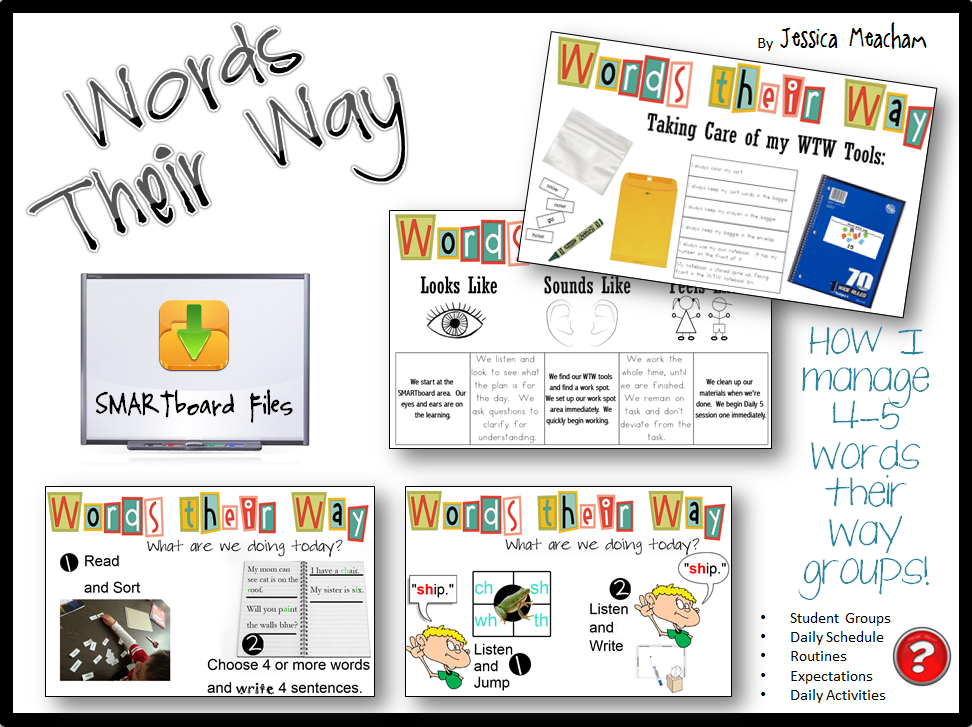
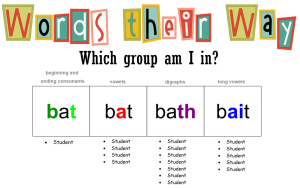
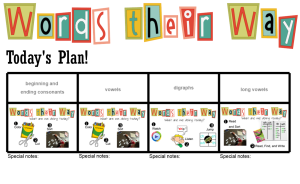
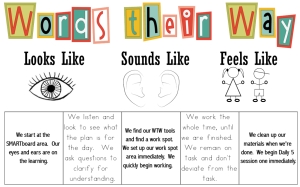
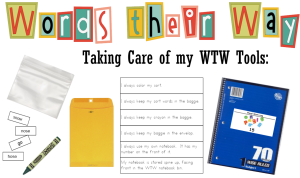
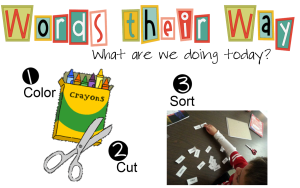
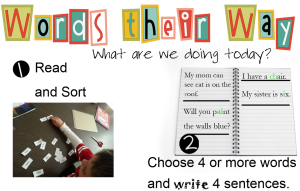

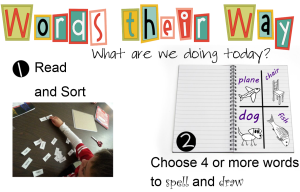
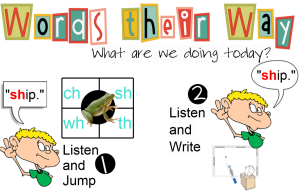
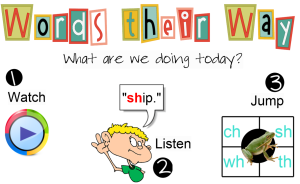
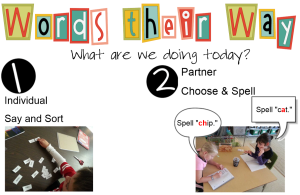
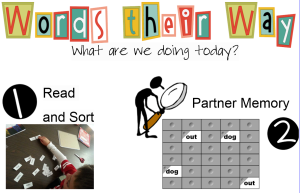



11 Comments
Really enjoyed reading how you manage the groups when using WTW. Thanks for sharing!!
Glad to help!
We are also doing our second year of WTW and I find it so confusing. Thank you for these examples. I am wondering what Daily 5 things do you do after WTW?
Tara
Students select between 3 and 4 session options on our workboard (smartboard file). I work with guided reading groups while they work independently (Read to Self, Read with Partner, Word Work, Listen to Reading, iPads, Work on Writing). You can see my work work activities by searching for “word work” on my site. Let me know if you need more help!
Hi Jessica! Your website has been such a blessing to me and I still use a lot of your reader’s and writer’s workshop units to guide my planning – and I’m in my 4th year of teaching 1st grade! Thank you so much for sharing your work! I’m also muddling through WTW, which I like, but I’ve been stressing out about how to fit in working with my groups. Do you pull spelling groups at a different time during the day? Are your students doing these WTW activities during “work on words” time during D5 (which I’m also using)? Last year I pulled spelling groups in the morning, during student morning work time, but this year that’s been more difficult. At other times I’ve alternated pulling groups during D5 time and during writer’s workshop, but I would really like to devote that time to my reading groups and writer’s conferences. Any advice? Thanks!
Last year our grade level switched for WTW groups three times a week. We assessed, grouped students, and created flexible groups that were changed with ongoing observation and assessment. This year, we aren’t switching, so WTW is in the classroom. I tried it as a stand alone time in my classroom, but am preferring doing it as a task during my Guided Reading time. Rather than have all student in the group do the same thing at the same time, I stagger it. SO if I have a group of three students…one starts with guided writing, another starts with their word sort, and the last one reads with me. I start with the book talk/preview if they happen to reading the same book before they start their work. Feels a little like I’m a circus master, but it seems to work for us! If there are four in a group, it gets trickier…but we make it work!
Hi, Jessica!
What amazing activities and resources you have created!!! We are beginning to use WTW program, and, like many other teachers, I am confused and don’t know how to set up the program in an efficient way. I work in a special school, and it is often very difficult to handle several groups at the same time, as not very many of our students are able to work independently. Your resources gave me hope that it is possible. Thank you very much!!!
May I also ask what fonts you use in creating your activities and resources? For example, how did you create your title – “Words Their Way”? Is there such a font? What other fonts do you use in your resources?
I would be very grateful if you could find time to answer my questions. I may have more questions once I set up my program.
Again – THANK YOU VERY MUCH!
Kind regards, Eugenia
Hello! The specialized fonts are actually alphabet letters from Lettering Delights: http://www.letteringdelights.com/. I love them! Recently I’ve moved away from whole group WTW to incorporating it into Guided Reading.
Here’s how:
Group of three—
— rotation 1- one student reads a part of the book, one does WTW, and one does guided/independent writing
— rotation 2 and 3 are the same (kids rotate activities)
I’ve been loving this method so far!
Hello from Australia!
Thank you, Jessica, so much for finding time to reply my comment! Very much appreciated!
Could you, please, send me the links to YouTube videos that you use in your “Sound Hop w/ Video” activity? Thank you in advance!
For your “Partner Memory” activity, do you have a laminated placemat on which the children place their words face down? How do you do it? Is there any chance of your sharing some resources that you use? If not, I will understand.
Thank you very much again!
Kind regards,
Eugenia
Hey! Truth be told, I’m a Last-Minute-Nelly and usually end up finding YouTube vids at the last moment! I have a dream though…that one day my Words their Way planning doc will include lesson resource links. One day… Sigh! Maybe this summer I’ll feel inspired? For the Partner Memory, I don’t have a template, but that would definitely help them keep the area neat and tidy!! Great idea!
[…] previously written about our Words Their Way routines and shared several resources. This year we made a few changes that I wanted to […]